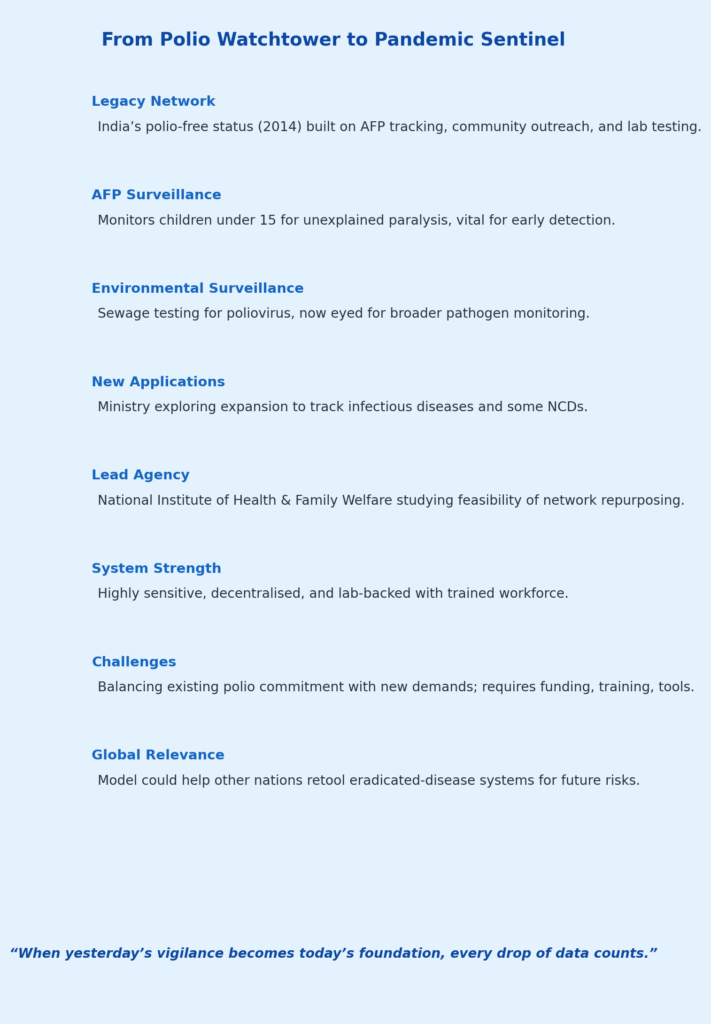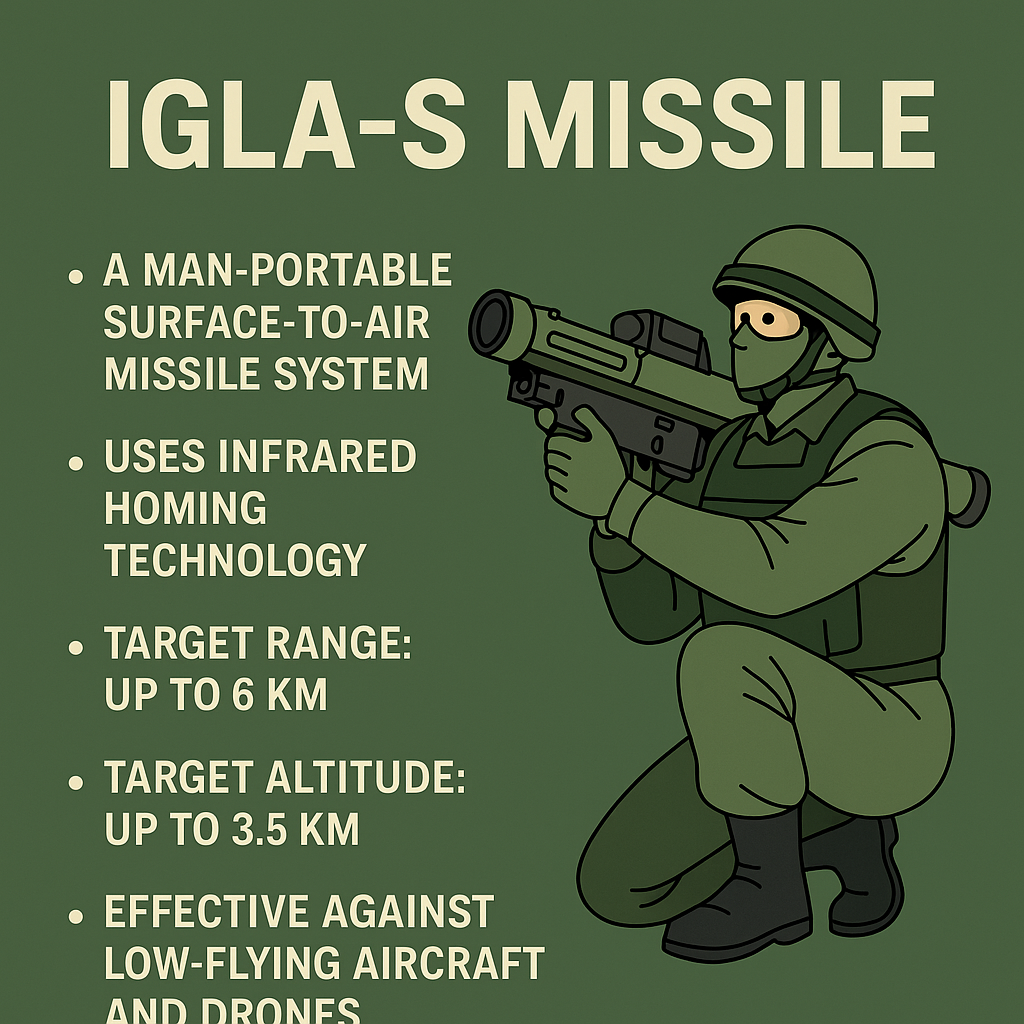
005. Polio Network to Power India’s Wider Disease Surveillance Grid 🩺
GS2: Health, GS3: Science & Technology, Prelims: Public Health Initiatives
By IAS Monk / April 4, 2025


🧬 Background: India’s Polio-Free Triumph
- Last polio case: 2011
- Polio-free declaration by WHO: 2014
- Surveillance legacy: Built through the National Polio Surveillance Project (1990s), with support from WHO
- Network includes:
- Health workers
- AFP surveillance officers
- Environmental testing labs
- Community mobilisers
🔍 How Surveillance Works
1. Acute Flaccid Paralysis (AFP) Tracking
- Focused on children under 15
- Identifies unexplained paralysis — an early sign of polio
- Quick response prevents outbreaks
2. Environmental Monitoring
- Tests sewage for wild poliovirus
- Helps trace invisible virus circulation
- High sensitivity helps prevent resurgence
🔄 Broadening the Horizon
- The Health Ministry is now exploring how this network can:
- Track emerging infectious diseases
- Possibly support non-communicable disease (NCD) monitoring
- A study by National Institute of Health & Family Welfare is underway
⚠️ Challenges to Address
| Challenge | Detail |
|---|---|
| System Overlap | Risk of compromising current polio vigilance |
| New Tech Needs | Different tools required for other pathogens/NCDs |
| Resource Allocation | Expanded role needs more funding, training, and tech |
✨ Closing Whisper
“When old maps no longer lead to monsters, they still lead to missions — a grid born for polio now dreams of curing tomorrow.”


















